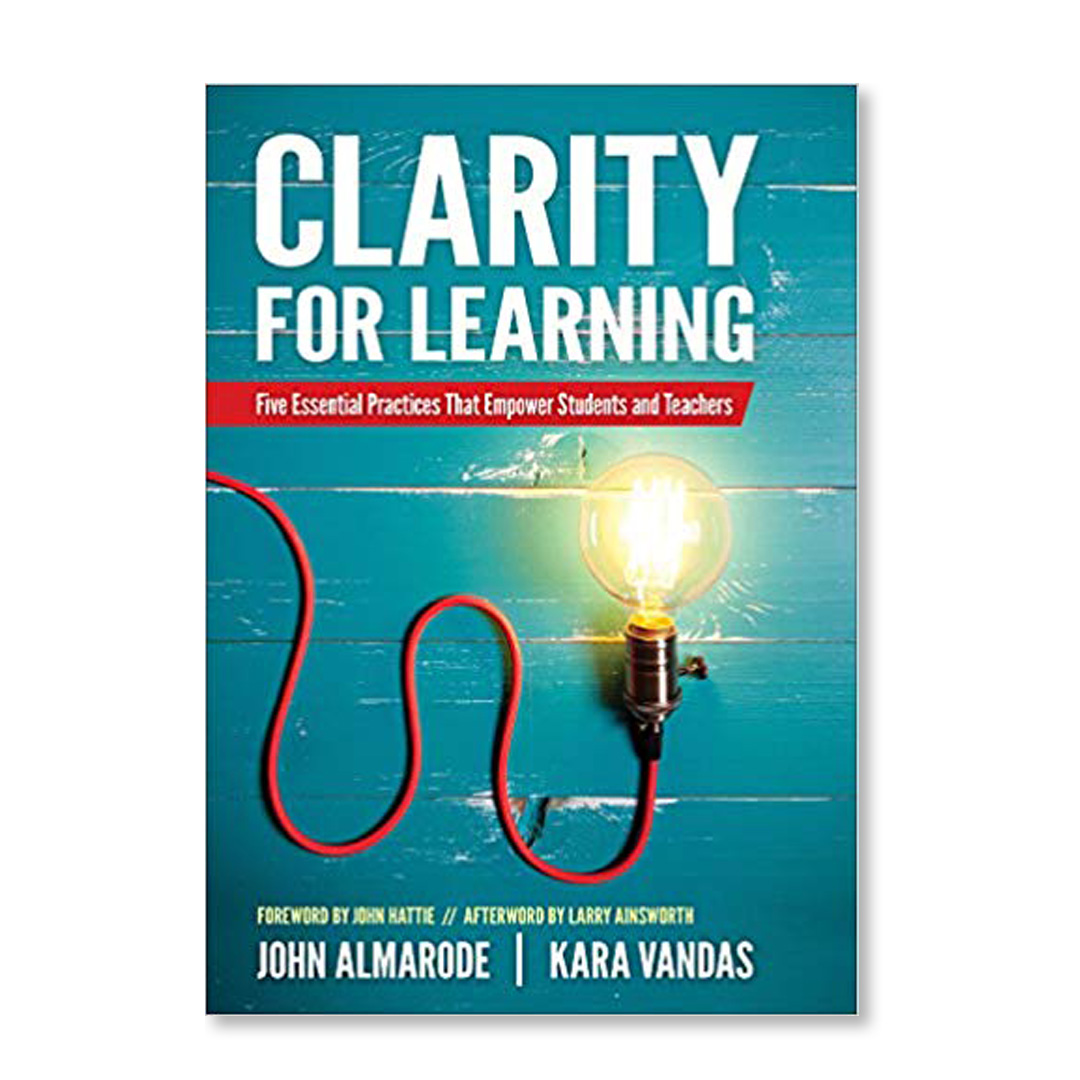
 One of the most effective ways to enhance students’ learning is by clarifying what the students should know and modeling how they can come to know those things. John Almarode, a former K-12 teacher and current associate professor at James Madison University, and Kara Vandas, a teacher, author, and educational consultant, recently published Clarity for Learning: Five Essential Practices that Empower Students and Teachers. Those five practices for promoting clarity in the classroom include: 1) crafting learning intention and success criteria; 2) co-constructing those criteria with learners; 3) offering opportunities for students to demonstrate comprehension; 4) giving and receiving feedback about students’ learning; and 5) collaborating with students and other educators to continue to improve teaching and learning.
One of the most effective ways to enhance students’ learning is by clarifying what the students should know and modeling how they can come to know those things. John Almarode, a former K-12 teacher and current associate professor at James Madison University, and Kara Vandas, a teacher, author, and educational consultant, recently published Clarity for Learning: Five Essential Practices that Empower Students and Teachers. Those five practices for promoting clarity in the classroom include: 1) crafting learning intention and success criteria; 2) co-constructing those criteria with learners; 3) offering opportunities for students to demonstrate comprehension; 4) giving and receiving feedback about students’ learning; and 5) collaborating with students and other educators to continue to improve teaching and learning.
Almarode and Vandas argue that, when classroom decisions are made with intentionality to promote learning, students should be able to identify what they are learning, why they are learning it, and how they will know that they have learned it. The authors are clear in their writing to promote teachers’ learning. For example, they begin each chapter with a statement of what readers can learn from it. They include guiding questions, reflection exercises, and detailed real-world models of successful clarity interventions.
Almarode and Vandas explain there are multiple ways that teachers are commonly unclear. They may craft learning experiences that are disconnected from the learning outcomes or where a fun activity takes precedence over the larger message the activity is intended to communicate. Teachers may use strategies that are poorly aligned with students’ needs. They may fail to monitor students’ learning or fail to use assessment data to inform how to modify their teaching or enhance their students’ learning.
The first step to gaining clarity is explicating what students are expected to learn. These learning intentions should be communicated to students in age-appropriate language. Doing so may make students more willing to engage with the learning process and develop a greater sense of ownership of their learning. Teachers should also help students monitor their progress and the effectiveness of their learning strategies, appreciate why that progress matters, and understand what else they might learn next. Modeling, demonstrating expectations for success, or offering examples, are effective way of providing clarity. Apprenticeships can make the thinking process visible while gradually and with practice and reflection bestowing more responsibility on the student. As students progress, the initial expectations of what they should learn and how they will demonstrate learning will need to be modified.
Giving students purposefully designed opportunities, whether formal or informal, to demonstrate their learning and make visible their thinking is an important tool for teaching with clarity. These opportunities to demonstrate learning should draw on students’ personal experiences, offer options of different ways to demonstrate learning, feel important to the students, and matter for a purpose beyond a good grade. They should be an authentic, engaging, active learning experience and a safe place to make mistakes. These opportunities to demonstrate learning help teachers see the learning experience from their students’ perspective. Indeed, students, perhaps more than anyone else, can provide teachers with insights into how to enhance the students’ learning.
Almarode and Vandas show that feedback is an important part of the learning process for teachers and students. To be most effective, feedback should be given in a timely manner, it should explicate what needs to be improved, and it should be delivered in a constructive tone. Too much feedback can stymie students. Teachers should recognize that students provide one another extensive feedback. Teachers can become involved in this process to make that feedback most helpful for students’ learning.
Although teachers are the final actors creating clarity in the classroom, that clarity is most likely to be achieved—and learning accelerated—when students, teachers, and school leaders all collaborate. Teachers can reflect about their teaching practices, look for signs of a lack of clarity, discuss with their colleagues about how to support learning, and request help and feedback from school leadership about the clarity of their teaching.
Almarode and Vandas offer a clear and compelling guide for educators to promote clarity in the classroom. With the school year starting soon, this book can help teachers set themselves up for a year of effective teaching.
Almarode, J., & Vandas, K. (2018). Clarity for learning: Five essential practices that empower students and teachers. Thousand Oaks, CA: Corwin Press.




